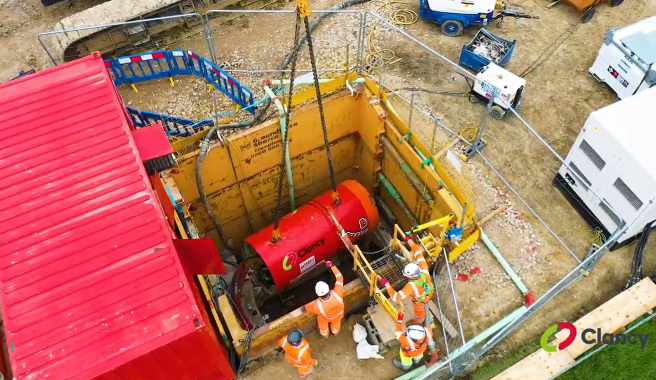You’ve reached your limit!
To continue enjoying Utility Week Innovate, brought to you in association with Utility Week Live or gain unlimited Utility Week site access choose the option that applies to you below:
Register to access Utility Week Innovate
- Get the latest insight on frontline business challenges
- Receive specialist sector newsletters to keep you informed
- Access our Utility Week Innovate content for free
- Join us in bringing collaborative innovation to life at Utility Week Live

Thames Water has begun work on a new sewer project in Gloucestershire to ease network pressures created by new housing developments.
 The £8.5 million scheme used micro-tunnelling techniques to install the 3.8km of piping to connect to a new pumping station.
The £8.5 million scheme used micro-tunnelling techniques to install the 3.8km of piping to connect to a new pumping station.
Neil Titchener, Thames’ head of major projects, said: “This is a big investment by Thames Water that will help protect homes and the environment in the Cotswolds from the kind of weather-related sewer flooding we saw earlier this year.
“By increasing capacity, our network will be able to handle much larger volumes of water. Thanks to a combination of innovation and collaboration, we have overcome many challenges, and are on course to finish ahead of schedule this autumn.”
The work will be undertaken via a joint venture between Kier and Clancy called KCD as part of Thames’ infrastructure alliance, a collaboration which Titchener said “set the benchmark” for future large projects.
Ian Thompson, head of developer services at KCD, said: “The area has a high water table, so significant de-watering had to be factored in from the outset. In total we’ve had to put in well points for each 500 metres of trench.
“Navigating existing utilities and infrastructure has also been important. We’ve used a combination of open cut trenching across fields and then micro-tunnelling under the carriageway and high-pressure gas mains.
Micro-tunnelling is a trenchless technique for pipe installation, which has allowed us to minimise disruption.




Please login or Register to leave a comment.